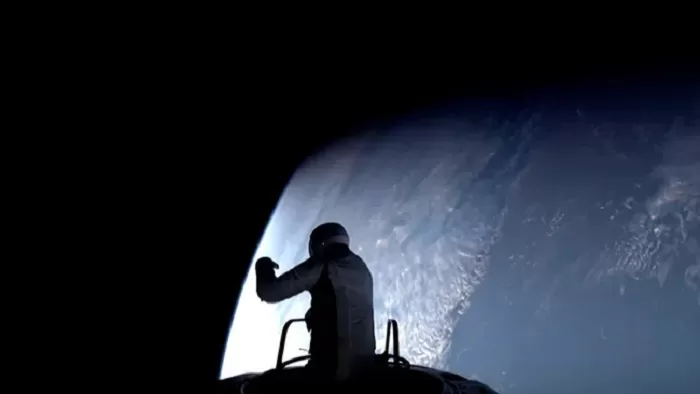Travel
SpaceX Achieves Milestone: Private Spacewalk by Non-Professionals

- Jared Isaacman and Sarah Gillis have completed the first spacewalk by non-professional astronauts, floating 435 miles above Earth.
- The SpaceX mission, funded by Isaacman, utilized innovative EVA suits and a non-traditional approach without an airlock.
- This historic achievement demonstrates the growing role of private companies in space exploration and sets a new benchmark for future missions.
In a historic success for private space exploration, millionaire Jared Isaacman and SpaceX engineer Sarah Gillis performed a spacewalk, the first time non-professional astronauts attempted such a perilous feat. The spacewalk, which took place 435 miles (700 km) above Earth, was an impressive effort that demonstrates the expanding involvement of private enterprises in the space industry.
Innovative Preparation and Execution
The spacewalk began at 11:52 BST, when Isaacman, who funded the Polaris Dawn mission, stepped out of the SpaceX Dragon capsule. Isaacman and Gillis walked outside the spaceship, which did not have a standard airlock while wearing specially developed extravehicular activity (EVA) suits. This novel approach creates a new standard in the realm of space exploration.
Before the spacewalk, the crew engaged in two days of “pre-breathing” to prepare for pressure fluctuations and avoid decompression sickness. This technique required exchanging nitrogen in their blood with oxygen, which ensured their safety during the journey to space. The Dragon capsule was then depressurised to imitate outside conditions, allowing the astronauts to safely depart the spacecraft.
Pioneering Technology and Record-Breaking Achievements
The spacewalk itself was a technological marvel. Unlike typical spacewalks from the International Space Station (ISS), which use an airlock to isolate the spacecraft’s interior from the vacuum of space, this mission provided a new level of exposure to the space environment. During the move, the Dragon capsule, which had been sent into space three times and carried a total of 11 crew members, was completely exposed to the space vacuum.
This mission demonstrated SpaceX’s willingness to challenge the limits of space exploration. Dr Simeon Barber, a research scientist at the Open University, observed that SpaceX’s methodology differed dramatically from past ways. The use of EVA suits, which have a heads-up display in the helmet for real-time data, marked a significant technological leap. Throughout the spacewalk, Gillis read data from her suit’s monitor, displaying the suit’s superior capabilities.
Breaking New Records
In addition to their revolutionary suits, SpaceX’s mission set records by sending all four astronauts into orbit at the same time. The Resilience spacecraft, which launched on a SpaceX rocket, planned to reach an orbit of up to 870 miles (1,400 km), the farthest any human has travelled since NASA’s Apollo mission ended in the 1970s.
This successful spacewalk not only marks an important milestone for SpaceX but also highlights the growing role of private enterprises in the space industry. The accomplishment heralds a new era in space travel, paving the way for future commercial missions and showcasing the potential for private businesses to push the limits of space research.

















































